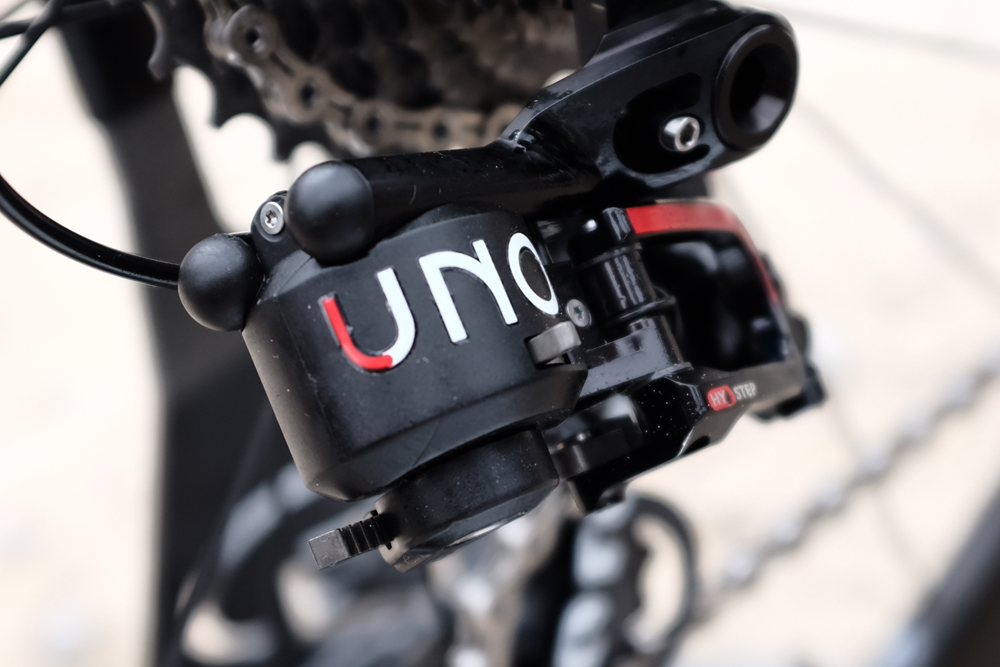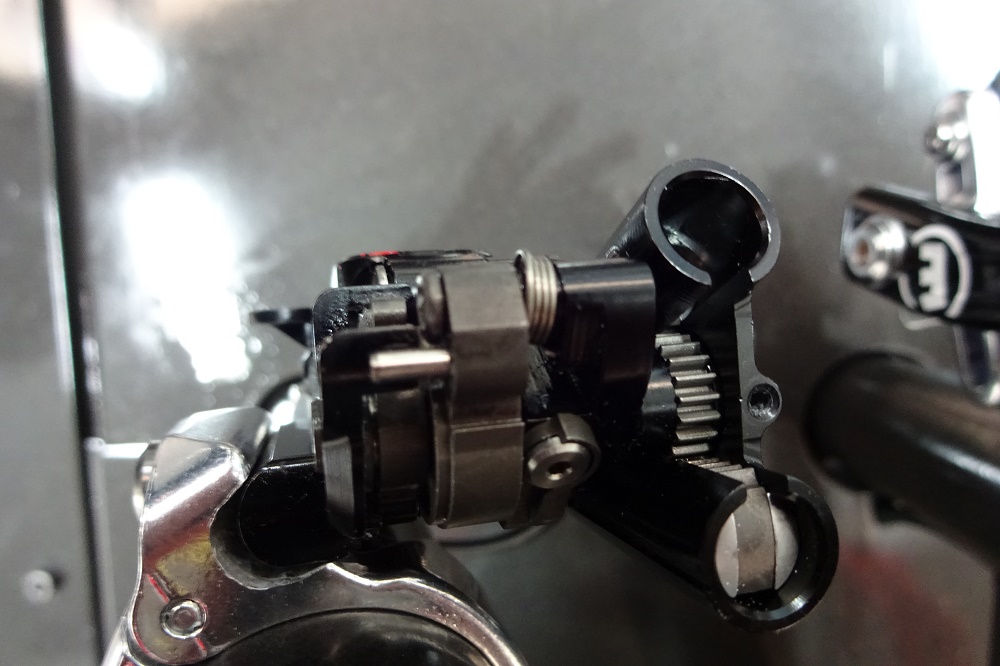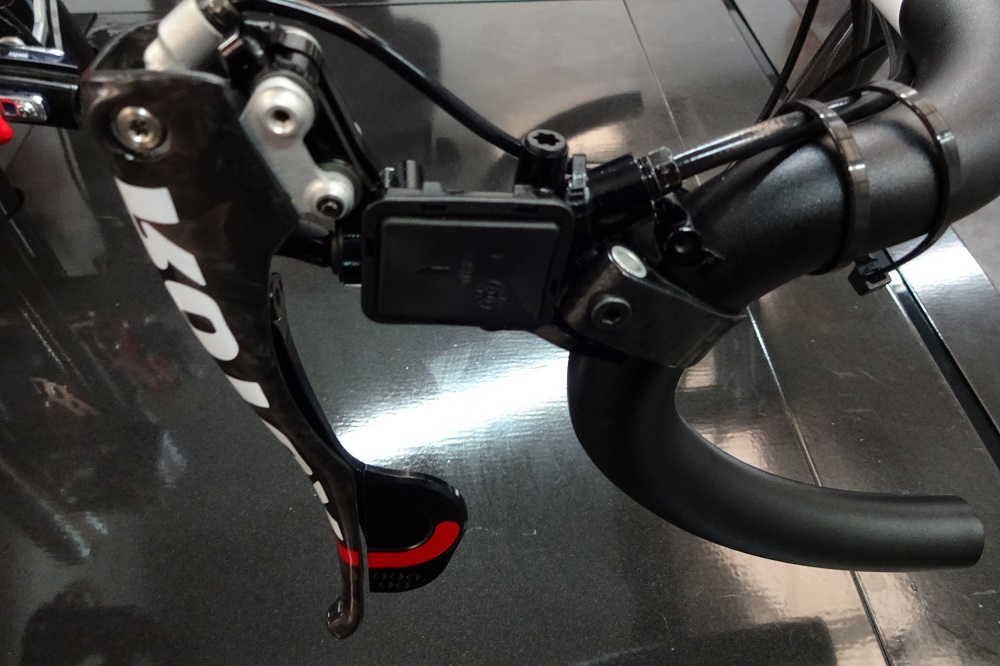Rotor Uno: world's first hydraulic groupset is the lightest disc brake groupset yet
Rotor has officially launched its new Uno groupset. It comes with a host of innovative features including hydraulic shifting. At a claimed 1604g (not including cranks), it's lighter than both SRAM Red and Shimano Dura-Ace


Rotor’s original product back in 1996 was its RCK crank system, while its widely used Q-rings launched in 2006. It’s expanded its product range since to include cranks and power meters.
At the official launch of Rotor Uno near Madrid this week, Lars Janssen, the company’s Uno Product Manager, said: “Offering a complete groupset was the next logical step for Rotor”. But Rotor hasn’t just followed the crowd with Uno. It’s been working on it for six years, developing some innovative features and producing a solution with very low overall weight.
>>> Rotor launches lightweight carbon Q-ring
Hydraulic shifting
For starters, Rotor Uno uses hydraulics for shift activation. Each lever body contains a single piece CNC moulding, made by Rotor in its own factory, with two pistons: one for the hydraulic brakes and one for the shifting.
There’s a single aluminium shift lever placed behind the carbon-fibre brake lever: a bit like SRAM DoubleTap, you push a short sweep to shift the rear mech up or the front mech down. Push further and the rear mech shifts to lower gears and the front mech from the small to the large ring.
Watch our first look at Rotor Uno at Challenge Mallorca
Rather than building the gear indexing into the lever, Rotor has moved it to the derailleur mechanisms. This means that there’s no routine adjustment required and no chance of ghost shifting. You set the lowest position to run correctly on the cassette’s largest sprocket and the rest just follow and are immune to any changes in the hydraulics. The mechanism can be set to shift between one and four gears per lever pull.

The rear derailleur also incorporates a disengagement feature: flip a small lever and the mech is freed up from the levers and the cage can move independently, making it easier to switch wheels and adding some protection against damage, for example when in transit.
Since they don’t contain anything other than the hydraulic pistons, the internals of the lever bodies are very minimalist, which has allowed Rotor to choose how large to make the hoods. They’re actually quite wide as testers preferred the extra width, but Rotor will have the option in future to offer different sizes to suit different riders.

The hydraulic hoses for the gears are very narrow with 3mm external diameter, a size which Rotor has chosen to allow them to be threaded internally through frames designed for electronic shifting cables. Being fluid filled, they’ll also handle tight turns without this impacting shift performance.
They are maintenance-free and filled with a 30 per cent glycol solution, which is stable down to -15ºC, so there’s little chance of your gears freezing. It’s also non-viscous and being a closed system, there’s no chance of contamination.
Hydraulic brake options
Rotor Uno is being offered with either hydraulic rim or disc brakes. Roto has paired up with German hydraulics manufacturer Magura, which already provides bicycle disc and rim brakes. There are also two versions of the brake levers: one for rim brakes and one for discs.

Because heat build-up in disc brakes can be large, this system contains a fluid reservoir whereas one is not required for the rim braked version. This means that you can’t swap between rim and disc brakes without changing the levers too. The brakes use 5mm reinforced hoses.
Wider than the shift hoses, they are filled with Magura’s proven Royal Blood oil which is environmentally friendly and does not adsorb water.
Disc brakes will be available in IS mount and direct mount version, while a direct mount version of the rim brake is in the pipeline.
And finishing components for a complete groupset
Rotor has also designed its own cassette for Uno. It comes in three parts each containing multiple sprockets: the smallest two domes are steel to cope with wear, while the largest is aluminium as the stresses on the teeth of larger gears are less.
The cassette’s splines are compatible with Shimano/SRAM freehub bodies. Rotor claims a weight of under 150g for the 11-28 available at launch.

And it has paired with KMC to offer an Uno chain. Based on the x11SL chain, it is DLC anti-wear coated and comes with red sideplates.
Real world testing
Rotor has had Uno installed on a number of bikes ridden by the Dimension Data team since January and all riders on the Bigla women’s team are also using the groupset. Janssen told us that the feedback from the teams has been invaluable and has resulted in a host of tweaks.

We rode a Cervelo R3 Disc equipped with Uno and Rotor’s new 2INpower power meter up the defining climb of last year’s Vuelta a Espana from Miraflores de la Sierra to Puerto de la Morcuera, where Fabio Aru attacked and dropped Tom Dumoulin, securing his first Grand Tour win.
Uno’s shifting – particularly at the rear – is accurate and direct and requires similar force to a mechanical set-up. At the front, there’s some feathering required to accommodate different chainlines. Braking is also effective. We dragged our disc brakes for several kilometres back down the climb, without developing any noticeable fade or brake rub.
Pricing, weight and availability
A complete Uno groupset including rim or disc brakes will retail for 2499 Euros without cranks. Rotor claims that the total weight for the shifters, derailleurs and disc brake hardware is 1604g, which is 10g less than the SRAM Red equivalent and 417g less than the same components for Shimano Di2.
Adding in Rotor cranks is likely to reduce this advantage, although the option is there to use the groupset with other manufacturers’ cranks. And with Rotor offering its own crank-based power meters it might not be so relevant for high-end users.
Initially Rotor will focus on selling aftermarket, but also expects Uno to be offered as an option on complete bikes. It also plans to launch additional Uno products in future. Janssen mentioned satellite shifters. Adding additional shift options would just be a case of joining their hoses up to the lines from the main gear shifters.

Thank you for reading 20 articles this month* Join now for unlimited access
Enjoy your first month for just £1 / $1 / €1
*Read 5 free articles per month without a subscription

Join now for unlimited access
Try first month for just £1 / $1 / €1
Get The Leadout Newsletter
The latest race content, interviews, features, reviews and expert buying guides, direct to your inbox!
Paul started writing for Cycling Weekly in 2015, covering cycling tech, new bikes and product testing. Since then, he’s reviewed hundreds of bikes and thousands of other pieces of cycling equipment for the magazine and the Cycling Weekly website.
He’s been cycling for a lot longer than that though and his travels by bike have taken him all around Europe and to California. He’s been riding gravel since before gravel bikes existed too, riding a cyclocross bike through the Chilterns and along the South Downs.
-
 Kim Le Court outsprints Demi Vollering and Puck Pieterse to take Liège-Bastogne-Liège Femmes victory
Kim Le Court outsprints Demi Vollering and Puck Pieterse to take Liège-Bastogne-Liège Femmes victoryMauritian edges out former Tour de France Femmes winner and La Flèche Wallonne champion to take unexpected win
By Tom Thewlis
-
 Urgent search launched for British Paralympian reported missing in Las Vegas
Urgent search launched for British Paralympian reported missing in Las VegasGB para-cyclist Sam Ruddock was last heard from on 16 April
By Tom Davidson